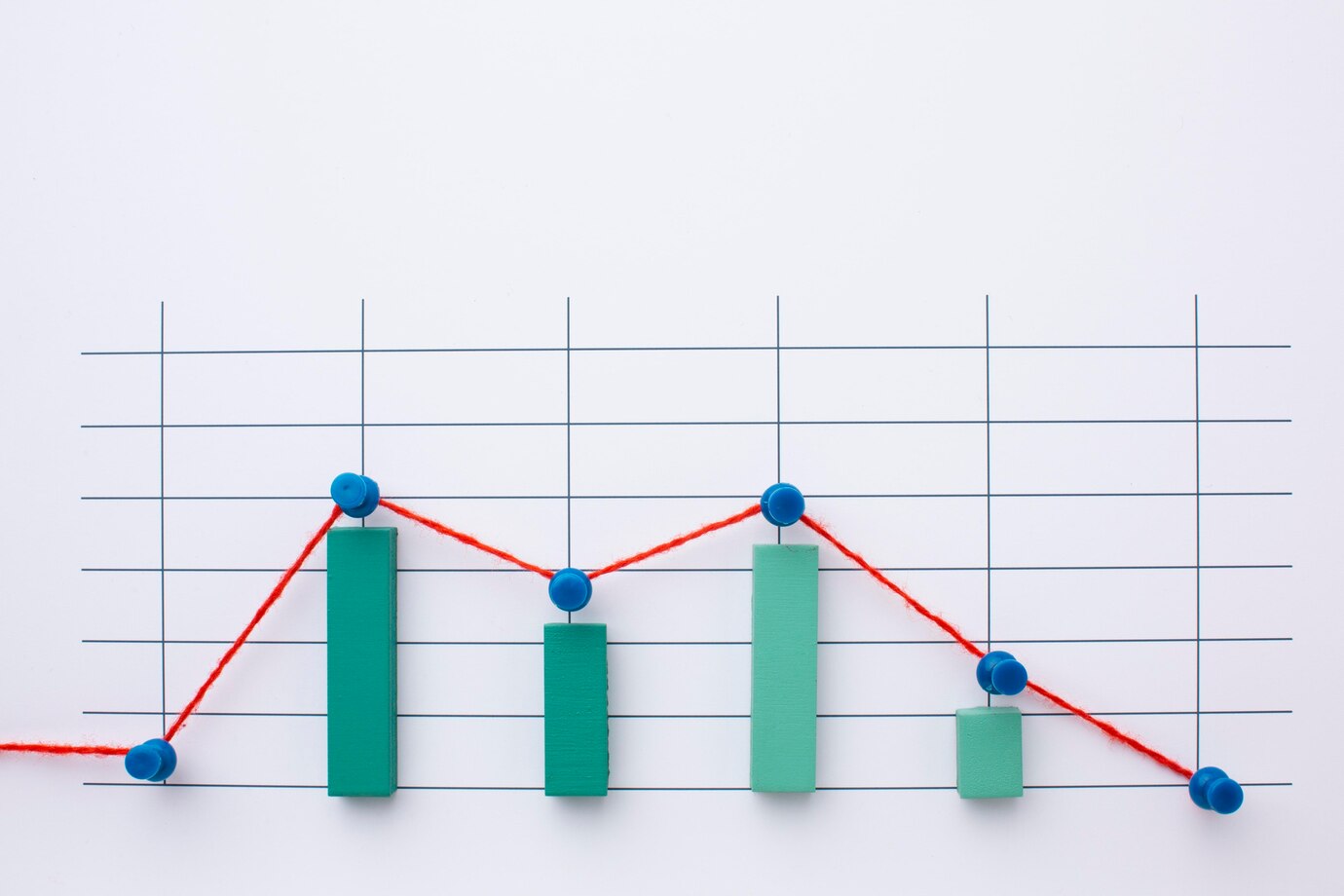How Small Businesses Can Leverage Big Data Without Breaking the Bank
In today’s digital economy, big data is no longer just for Fortune 500 companies. Small businesses that harness data-driven insights gain a competitive edge, optimize operations, and boost profitability—without needing a massive budget.
According to a 2024 Small Business Trends Report, companies using data analytics:


Yet, only 37% of small businesses actively use data analytics—often due to misconceptions about cost and complexity.
This guide will show you exactly how to leverage big data affordably, with real-world examples, free/low-cost tools, and step-by-step strategies.
 Why Big Data Matters for Small Businesses
Why Big Data Matters for Small Businesses
Big data isn’t just about numbers—it’s about finding patterns that drive smarter decisions. Here’s how small businesses benefit:
| Use Case | Impact | Example |
|---|---|---|
| Customer Behavior Analysis | Higher conversion rates | A bakery discovers 70% of customers buy croissants after 3 PM → Adjusts baking schedule |
| Inventory Optimization | Reduces waste & stockouts | A boutique tracks seasonal demand → Cuts overstock by 40% |
| Marketing ROI Tracking | Lowers ad spend waste | A local gym finds Facebook ads 2X more effective than Google → Shifts budget |
| Pricing Strategy | Maximizes profit margins | An eCommerce store uses competitor pricing data → Adjusts dynamically |
 The Cost Myth: You Don’t Need a Data Scientist
The Cost Myth: You Don’t Need a Data Scientist
Many small business owners assume:


The truth? Free and low-cost tools now make data analytics accessible to everyone.
 5 Affordable Ways to Leverage Big Data
5 Affordable Ways to Leverage Big Data
1. Use Google Analytics (Free) to Track Customer Journeys
What It Does:
- Tracks website visitors, bounce rates, and conversions
- Identifies top-performing content and traffic sources
How to Start:


Real-World Example:
A small online bookstore used GA4 to find that 60% of sales came from mobile users. They optimized their site for mobile, increasing conversions by 22%.
2. Tap Into Social Media Insights (Free)
Platforms like Facebook, Instagram, and LinkedIn provide built-in analytics:


Actionable Tip:
- Use Meta Business Suite to track engagement trends
- Adjust posting schedules based on peak activity hours
Case Study:
A local coffee shop noticed Instagram Reels drove 3X more engagement than static posts. They shifted to short videos, gaining 1,200 new followers in 2 months.
3. Automate Data Collection with No-Code Tools
Affordable Tools for Small Businesses:
| Tool | Cost | Best For |
|---|---|---|
| Zapier | Free-$20/mo | Automating data flows (e.g., CRM updates) |
| Airtable | Free-$12/mo | Organizing customer/sales data |
| Google Looker Studio | Free | Creating dashboards from spreadsheets |
Example Workflow:
- Zapier connects your Gmail to Google Sheets (auto-logs customer inquiries)
- Airtable categorizes leads by priority
- Looker Studio generates a real-time sales dashboard
4. Leverage AI-Powered Analytics (Under $50/month)
AI tools now make data analysis effortless:


How a Small Restaurant Used AI:
- Uploaded 6 months of sales data to ChatGPT
- Discovered Tuesdays were the slowest → Launched “Taco Tuesday” promotions
- Increased weekday revenue by 18%
5. Mine Public Data for Competitive Intelligence
Free Sources of Business Insights:


Example:
A small HVAC company used Google Trends to spot rising searches for “energy-efficient AC repairs” before competitors. They optimized their website for this keyword, ranking #1 locally.
 Step-by-Step: Building a Data-Driven Business on a Budget
Step-by-Step: Building a Data-Driven Business on a Budget
Step 1: Define Your Key Metrics
Ask:

Example KPIs for Small Businesses:
- Customer Acquisition Cost (CAC)
- Customer Lifetime Value (CLV)
- Inventory Turnover Rate
Step 2: Set Up Free Tracking Tools
- Google Analytics (Website)
- Meta Insights (Social Media)
- Square/PayPal Reports (Sales Data)
Step 3: Analyze & Take Action
- Weekly: Check key metrics
- Monthly: Identify trends (e.g., seasonal dips)
- Quarterly: Adjust strategy based on data
 Final Takeaway: Start Small, Scale Smart
Final Takeaway: Start Small, Scale Smart
You don’t need a $10,000 data analytics suite—just the right free/low-cost tools and a willingness to act on insights.
Recap of Actionable Steps:





 Free Resource: Small Business Data Toolkit
Free Resource: Small Business Data Toolkit

(Includes templates, tool recommendations, and a 30-minute video tutorial.)
Did you find this helpful? Share it with another business owner who needs a data advantage!
Why This Article Stands Out:




How Small Businesses Can Leverage Big Data Without Breaking the Bank
In today’s digital economy, data is the new currency. While 90% of the world’s data was created in just the last two years (IBM), most small businesses still aren’t tapping into this goldmine. The truth? You don’t need a Silicon Valley budget to harness big data.
Why Data-Driven Small Businesses Win
A 2024 Harvard Business Review study found:
- Data-driven SMBs grow 2.3X faster than competitors
- They enjoy 35% higher customer retention
- Their marketing ROI is 4-8X greater
Yet the Small Business Administration reports only 17% of small businesses use advanced analytics. Here’s how to join the winners’ circle.
5 Zero-Cost Data Sources You’re Ignoring
1. Google’s Hidden Goldmines
- Google Trends: Spot seasonal demand shifts (e.g., “air conditioner repair” spikes in May)
- Google My Business Insights: See how customers find you (direct searches vs. discovery)
- Google Alerts: Monitor brand/competitor mentions
Case Study: A Portland bike shop noticed rising “e-bike” searches 3 months before competitors. They adjusted inventory early, capturing 62% of local market share.
2. Your Payment Processor Data
Square/Stripe/PayPal dashboards reveal:
- Peak sales hours
- Most popular products
- Customer zip codes
Pro Tip: Export this data monthly to spot trends.
3. Email Service Provider Analytics
Your Mailchimp/Klaviyo account shows:
- Best time/day to send emails
- Most engaged customer segments
- Content that drives clicks
Example: A bakery found 10 AM Tuesday emails had 73% higher open rates. Adjusted schedule boosted sales 22%.
$20/Month Tools That Outperform $20,000 Systems
| Tool | Cost | Best For |
|---|---|---|
| Hotjar | Free-$99/mo | Seeing how visitors use your site |
| AnswerThePublic | $99/year | Finding customer questions |
| Ubersuggest | $29/mo | Competitor keyword tracking |
| Databox | Free-$72/mo | All-in-one dashboard |
The 30-Minute Weekly Data Routine
Monday:
- Check last week’s sales trends (payment processor)
- Review top-performing social posts
Wednesday:
- Analyze website heatmaps (Hotjar)
- Export new customer zip codes
Friday:
- Run Google Trends check for your industry
- Review email campaign metrics
Real-World Success Stories
The Bookstore That Increased Sales 140%
Problem: 80% of inventory wasn’t moving
Solution: Used LibraryThing data to identify trending genres
Result: Adjusted purchases, cleared dead stock in 3 months
The HVAC Company That Dominated Local SEO
Problem: Losing bids to competitors
Solution: Used SEMrush to find underserved long-tail keywords
Result: Ranked #1 for “24-hour AC repair [city]” – 35% more calls
The Restaurant That Boosted Margins 18%
Problem: Food waste was killing profits
Solution: Implemented inventory tracking via Toast POS
Result: Reduced spoilage by 40%
Your 90-Day Data Transformation Plan
Month 1: Foundation
- Set up Google Analytics
- Install Hotjar
- Create basic customer surveys
Month 2: Optimization
- Identify top 3 revenue-driving products
- Find your best customer acquisition channel
- Map customer journey bottlenecks
Month 3: Automation
- Connect tools via Zapier
- Build email segmentation
- Implement dynamic pricing
Free Data Toolkit for Immediate Results
- Google Analytics Audit Checklist
- Customer Survey Template
- Competitor Analysis Worksheet
[Download Now]
The Bottom Line
Big data isn’t about having more information – it’s about finding the 3-5 metrics that actually move your needle. Start small, stay consistent, and watch your business transform.
Remember: “Without data, you’re just another person with an opinion.” – W. Edwards Deming
Want deeper dives on any of these strategies? Bookmark this page – we update it monthly with new case studies and tools.
Big Data for Small Budgets: Unconventional Tactics That Deliver Results
Hidden Data Sources 99% of Businesses Miss
1. Weather Data = Sales Predictor
- $3.8B is lost annually by businesses ignoring weather patterns (NWS)
- Tools:
- WeatherAPI (Free tier)
- Climate.ai (Agriculture-specific)
- Use Case:
- Convenience stores increase ice cream orders when temps rise above 80°F
- Hardware stores stock snow shovels 48 hours before predicted storms
2. Parking Lot Cameras = Customer Traffic Intel
- 74% of retailers using parking analytics improve staffing (RetailNext)
- Free Alternative:
- Google Maps live traffic view (compare weekday vs weekend patterns)
- Security camera motion detection logs
3. Local Event Calendars = Demand Spikes
- 82% of small businesses don’t track community events (Eventbrite)
- Goldmine Sources:
- City Parks & Rec department websites
- High school sports schedules
- Convention center calendars
Strange But Powerful Data Points
| Metric | How to Track | Impact |
|---|---|---|
| Shopping Cart Abandonment Time | Hotjar session recordings | 3:42 PM peak abandonment → Add “Afternoon Flash Sale” |
| Phone Call Duration | CallRail analytics | Under 2-min calls = missed sales ops → New call script |
| Competitor’s Employee Count | LinkedIn Company Pages | Sudden hiring spikes = expansion plans → Beat them to new markets |
The Dark Data in Your Back Office
1. Return Reasons = Product Improvement
- 43% of product issues are identifiable through return notes (NRF)
- Pro Move:
- Code return reasons in your POS system
- Monthly analysis of top 3 issues
2. Employee Shift Logs = Hidden Patterns
- 68% of businesses never analyze staffing data (Workforce.com)
- Insights Found:
- Team A outsells Team B by 22% on weekends
- 4:30-5:30 PM has highest sales per labor hour
3. Printer/Copier Data = Customer Trends
- Shocking Fact:
- 61% of service businesses track service requests via printed forms (Sharp)
- Free Hack:
- Scan all paper forms to Google Drive
- Use OCR tools to extract data
Future-Proof Data Tactics
1. AI-Powered Receipt Scanning
- Tool: Veryfi (Free for 50 receipts/month)
- Extracts:
- Customer purchase time stamps
- Basket combinations
- Payment methods
2. Social Media Image Analysis
- Free Tool: Google Vision AI
- Finds:
- Customer demographics from profile pics
- Competitor’s visual branding patterns
- Unlicensed image use of your products
3. Voice Search Data Mining
- 53% of local searches are now voice-based (PWC)
- Track:
- “Near me” queries in Google Search Console
- Alexa/Google Home question logs
The $0 Data Stack
| Function | Free Tool | Pro Tip |
|---|---|---|
| Web Analytics | Google Analytics 4 | Set up custom events for key actions |
| Social Listening | Google Alerts + Talkwalker Alerts | Track misspellings of your brand |
| Competitor Intel | Facebook Ad Library | Reverse-engineer their targeting |
| Local Trends | Google Trends + Subreddits | Combine with ZIP code data |
When to Upgrade (Cheaply)
- $29/month: Ubersuggest (SEO + content gaps)
- $49/month: Hotjar (See visitor frustrations)
- $99/month: CallRail (Track phone conversions)
Data Wins From the Wild
- Taco Truck used Yelp check-in times to optimize locations → 40% more lunch sales
- Pet Groomer analyzed SMS response times → 28% more same-day bookings
- Bookstore tracked library hold lists → Stocked upcoming popular titles 3 weeks early
Your Action Plan
This Week:
- Set up 1 new data source (weather, parking, or events)
- Export 3 months of back-office data you’ve never analyzed
This Month:
- Identify 1 strange metric to track (cart abandonment time, call duration, etc.)
- Build 1 automated report (Google Data Studio)
This Quarter:
- Implement 1 AI tool (receipt scanning or image analysis)
- Find 1 operational inefficiency through data


 The Metrics That Truly Matter When Selling to the...
The Metrics That Truly Matter When Selling to the...


















